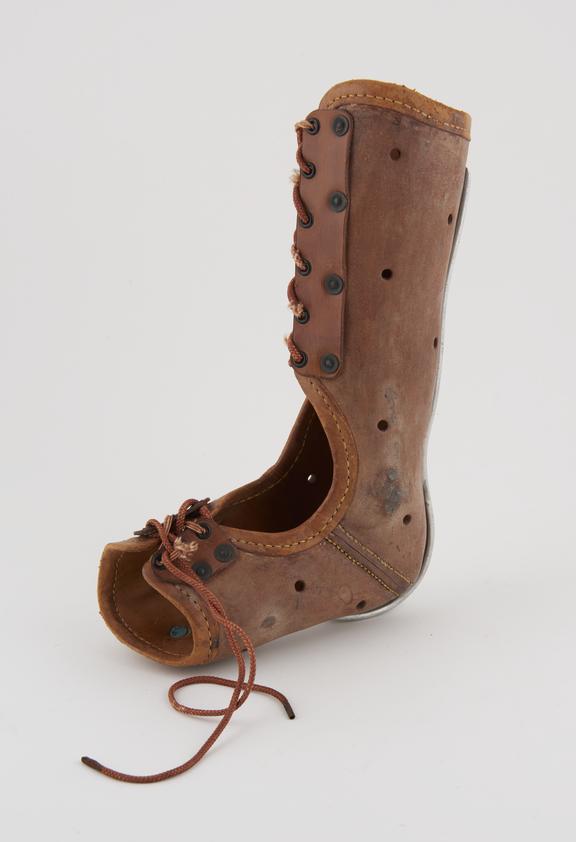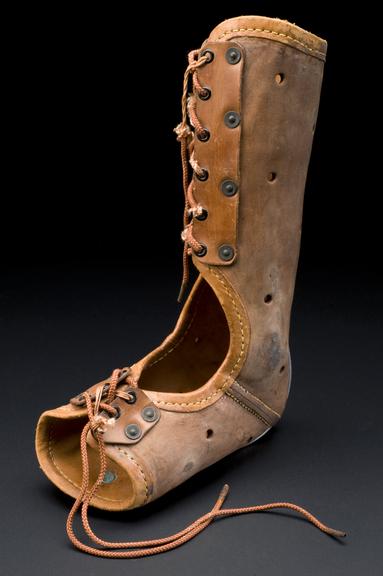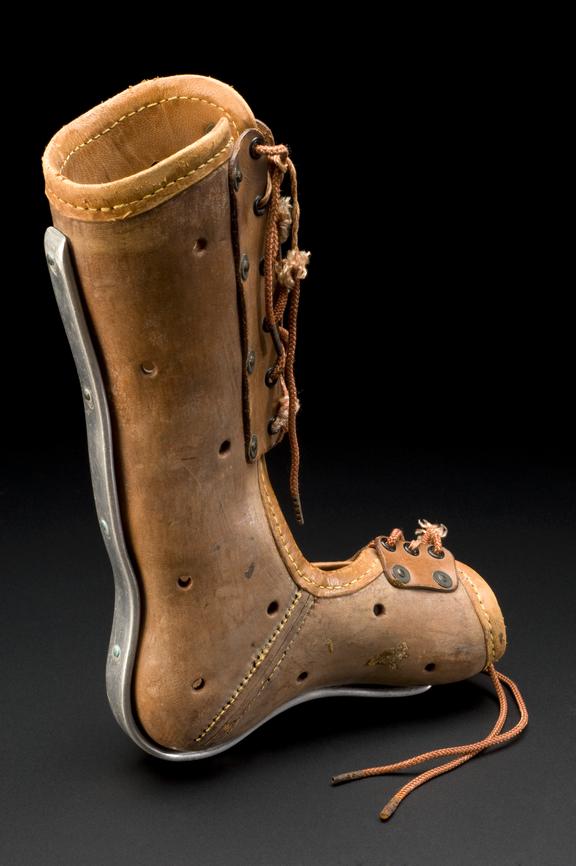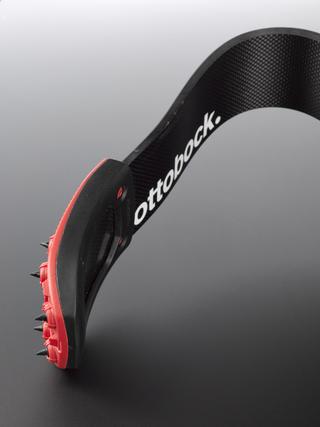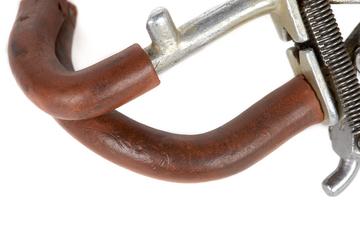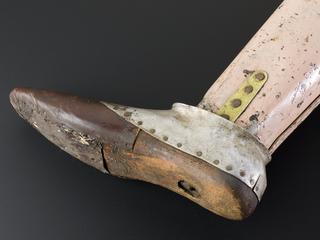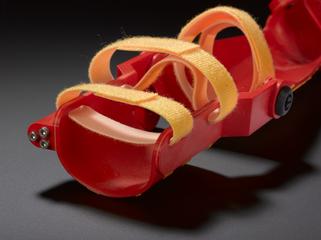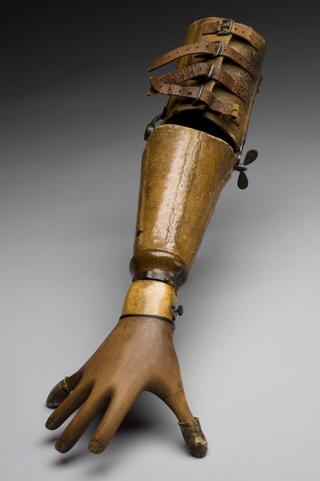



Lower leg and ankle splint, with laced leather casing and metal strengthening, from the Lord Mayor Treloar Orthopaedic Hospital, Alton, Hampshire, England, 1940-1960
Polio and rickets are two conditions that can cause the leg bones of children to become deformed. Supported by a metal bar from calf to toes, this leather splint was used to encourage correct bone growth. Lacing up at the toes and under the knee, the splint was probably worn most of the day and night.
The splint was used at the Lord Mayor Treloar Orthopaedic Hospital in Alton, Hampshire, England. The hospital was set up in 1908 to treat children with a range of orthopaedic conditions and physical disabilities. The hospital combined treatment with education and schooling.
Details
- Category:
- Orthopaedics
- Object Number:
- 2002-330
- Materials:
- leather, aluminium alloy, cotton (fibre), copper (metal), brass (copper, zinc alloy) and textile
- Measurements:
-
overall: 290 mm x 90 mm x 180 mm, .42kg
- credit:
- North Hampshire Hospitals NHS Trust
